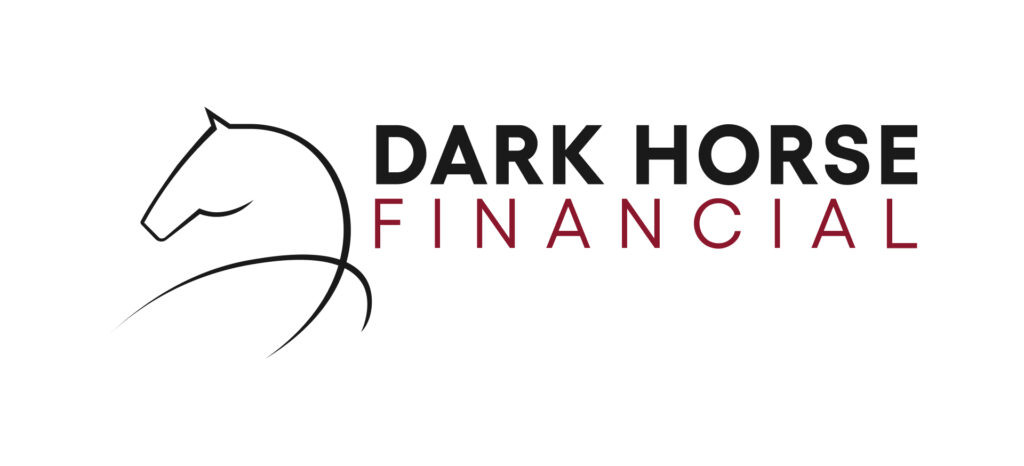Key Takeaways
- Caveat loans are short-term, fast-access loans secured against property, often used for urgent funding needs. The lender places a caveat on the property, preventing its sale before the loan is repaid.
- Defaulting on a caveat loan can lead to legal action, credit damage, and increased costs, along with reputational damage.
- Refinancing is a common exit strategy, allowing borrowers to replace the caveat loan with a traditional loan.
- Using another property, either by selling or borrowing against it, can help repay the loan quickly and effectively.
- Open negotiation with the lender may result in a loan extension or restructured terms if repayment issues arise.
- Lump sum payments from business income, settlements, or other windfalls can be a quick and cost-effective way to discharge a caveat loan.
- Developers can exit via project completion, using sales proceeds or construction finance to repay the loan.
- Repaying your caveat loan on time requires planning, discipline, and regular communication with your lender or financial advisor.
- If you’re considering refinancing or borrowing against the equity of another property to exit your caveat loan, contact our team at Dark Horse Financial to navigate the process effectively.
When you take out a caveat loan in Australia, it’s essential to have a clear exit strategy in place. Caveat loans are short-term, high-interest financing solutions often used by business owners needing quick capital. However, without a solid repayment plan, borrowers risk defaulting, leading to financial strain or even losing their property.
Let’s explore effective caveat loan exit strategies in Australia, outlining repayment options and avoiding potential pitfalls. By understanding these options, you can repay your caveat loan efficiently and avoid defaulting and its consequences.
Understanding Caveat Loans
A caveat loan is a short-term secured loan where the lender places a caveat (a legal notice) on the borrower’s property title. This prevents the borrower from selling the property without first repaying the loan. Caveat loans are often approved within 24 hours to a few days, and funding can be available almost immediately, making them ideal for urgent financial needs.
However, due to their high-interest rates and short repayment terms (typically ranging from a few weeks to 12 months), it’s important to plan strategies to pay off caveat loans.
What Happens If I Default on a Caveat Loan?
Defaulting on a caveat loan can lead to serious and swift consequences, especially because these types of loans are secured by a legal caveat over your property. Here’s what’s likely to happen:
1. Enforcement Action by the Lender
If you fail to repay the loan by the agreed date, the lender has the legal right to enforce the caveat. This can include issuing a notice of default, which may give you a short timeframe (sometimes as little as a few days) to pay the outstanding amount. Many private lenders include clauses that allow for accelerated action without the long delays seen in standard mortgage enforcement, so acting fast is crucial.
2. Forced Sale of the Property
If the loan remains unpaid after enforcement action is initiated, the lender may initiate legal proceedings to force the sale of the property to satisfy the debt. The lender is typically entitled to recover the outstanding loan principal, add default interest (which can be significantly higher than standard rates), and claim enforcement and legal costs. If the proceeds from the sale fall short of the loan amount, the borrower remains liable for the remaining balance.
3. Credit Score Damage
Defaulting on a caveat loan may also impact your credit file, particularly if the lender reports the default to a credit reporting agency or obtains a court judgment. This can lower your credit rating, making it harder to obtain finance in the future. While defaulting on some caveat loans may not be reported to credit bureaus, court actions are public record and can still impact your ability to gain credit in the future..
4. Increased Costs and Interest
The cost of defaulting on a caveat loan can grow quickly due to:
- Default interest rates, which are often significantly higher than the original rate
- Legal and administrative costs, including solicitor’s fees and court filing expenses
- Valuation and other fees, if a forced sale occurs
5. Business and Personal Implications
If you used a caveat loan to fund a business and default on repayment, the ripple effects can extend beyond finances:
- Damage to your business reputation, particularly if suppliers, partners or customers become aware of legal proceedings
- Interruption to operations, if a secured asset is central to your business activities
- Personal stress and legal exposure, particularly for small business owners

Why Having a Caveat Loan Exit Strategy is Important
An exit strategy is a plan developed by a borrower to repay or settle a loan before its due date, typically through refinancing, asset sales, or other financial arrangements. It ensures the loan is discharged without default, protecting the borrower from penalties or legal actions.
What are the risks of not having a caveat loan exit strategy? Having no exit route can lead to defaulting and its accompanying consequences.
A well-planned exit strategy for a caveat loan ensures you can repay on time, avoiding penalties and preserving your property. It helps you avoid costly default interest rates, legal fees, and potential forced sale of your secured asset.
Having a strategy provides confidence to lenders, increasing your chances of approval and better loan terms. It allows you to make informed financial decisions, aligning the loan term with your expected cash flow or asset sale.
Most importantly, it protects your credit rating and financial reputation by reducing the risk of late or missed repayments.
What Are Effective Exit Strategies For Caveat Loans?
Here’s how to exit a caveat loan:
1. Caveat Loan Refinancing Options
Can I refinance a caveat loan with a traditional mortgage? Yes, refinancing is one of the caveat loan repayment options available. This strategy involves replacing the caveat loan with a longer-term facility such as a standard mortgage, business loan, or another private loan. In some cases, borrowers transition from a caveat loan to a standard mortgage once the urgent financial need has been met and they qualify under standard lending criteria.
It’s worth noting that refinancing a caveat loan is mostly possible with non-bank or specialist lenders. If you need help navigating this process, contact our team at Dark Horse Financial, and we’ll be happy to help.
2. Utilising Another Property
Another way of repaying caveat loans involves using another property (if applicable). However, it’s important to ensure the proceeds from borrowing against or selling another property meet or exceed the value of the caveat loan.
- Borrow Against Another Property: If you own multiple properties, you can take out a second mortgage or an equity release against a different unencumbered property. This type of loan can be used to discharge the caveat loan quickly.
- Sell Another Property: Selling another asset can be a fast and definitive way to repay your caveat loan. You can use the proceeds to immediately discharge the caveat on your property.
3. Negotiating with the Lender
Sometimes, unforeseen circumstances, such as project delays or changes in market conditions, can derail your repayment timeline. In such cases, negotiating with your lender can be a practical exit route.
Here are ways to approach negotiation:
- Request an extension: If you’re close to securing refinancing or selling a property, ask the lender to extend the term.
- Negotiate reduced interest or fees: In hardship cases, some lenders may be open to reducing interest rates or waiving certain fees.
- Restructure the loan: Convert the caveat loan into another form of debt with different repayment terms.
4. Lump Sum Repayment
Another straightforward caveat loan exit strategy is to repay the loan with a lump sum from either:
- A business revenue surge (e.g., invoice payments, seasonal sales)
- A tax refund
- An inheritance or legal settlement
- An investment windfall
This method works best for borrowers who anticipate a significant cash inflow during the loan term.
5. Developer Exit via Project Completion
For property developers, caveat loans can be used to fund early-stage development expenses like development application costs, site acquisition, or initial construction payments. Once the development reaches a milestone (e.g., completion or pre-sale threshold), the borrower can:
- Secure construction finance
- Receive settlement proceeds from off-the-plan sales
- Sell or refinance the completed property

How Can I Repay My Caveat Loan on Time?
Repaying your caveat loan on time starts with having a clear and realistic exit strategy in place from the moment the loan is approved. Whether you plan to refinance, sell an asset, or receive a lump sum payment, align the loan term with your anticipated cash flow.
Stay proactive by monitoring key dates and setting reminders well ahead of your repayment deadline. Engage with a broker like Dark Horse Financial or a financial advisor early to explore refinancing options or prepare documentation for a property sale or equity release.
Keep communication open with your lender—if delays arise, notifying them early can open the door to short-term extensions or flexible arrangements. Above all, avoid using the loan for non-essential expenses, and ensure that any expected income or settlement used for repayment is as certain as possible.
Being organised, realistic, and financially disciplined is the key to avoiding default and repaying your caveat loan on time.
What Happens in the Caveat Loan Discharge Process
The caveat loan discharge process occurs when the borrower repays the loan in full, allowing the lender to remove the caveat placed on the property. Once removed, the borrower regains full control over the property, allowing them to sell, refinance, or make other decisions without restrictions from the caveat.
Choosing the Right Strategy
There is no definitive single approach to exiting a caveat loan. The best strategy depends on:
- Your financial position
- Your asset portfolio
- Market conditions
- The nature of your original loan
In many cases, combining strategies, such as negotiating an extension while working on a refinance, provides the best results.
Final Thoughts: Planning Ahead is Key
The key to success with caveat loans lies in planning your exit strategy from the very beginning. While these loans offer speed and flexibility, they are best used by borrowers who have a clear and timely caveat loan repayment plan in place.
With the right exit strategy, you can avoid defaulting, high penalties, forced sale of your property, and credit and reputational damage. You can either refinance your caveat loan, sell or borrow against a different property, negotiate with your lender, or pay a lump sum. If you’re a developer, you can use the proceeds from finishing and selling your properties to repay your caveat loan.
Whichever exit strategy you use, it’s important to assess your situation carefully and seek help from lending experts or financial advisors before making your move.
Get a Caveat Loan (Or Exit One)
Our team can help you explore all your caveat loan refinancing options that fit your situation. If you're currently considering a caveat loan—or need help exiting one—reach out to our team for expert advice.





